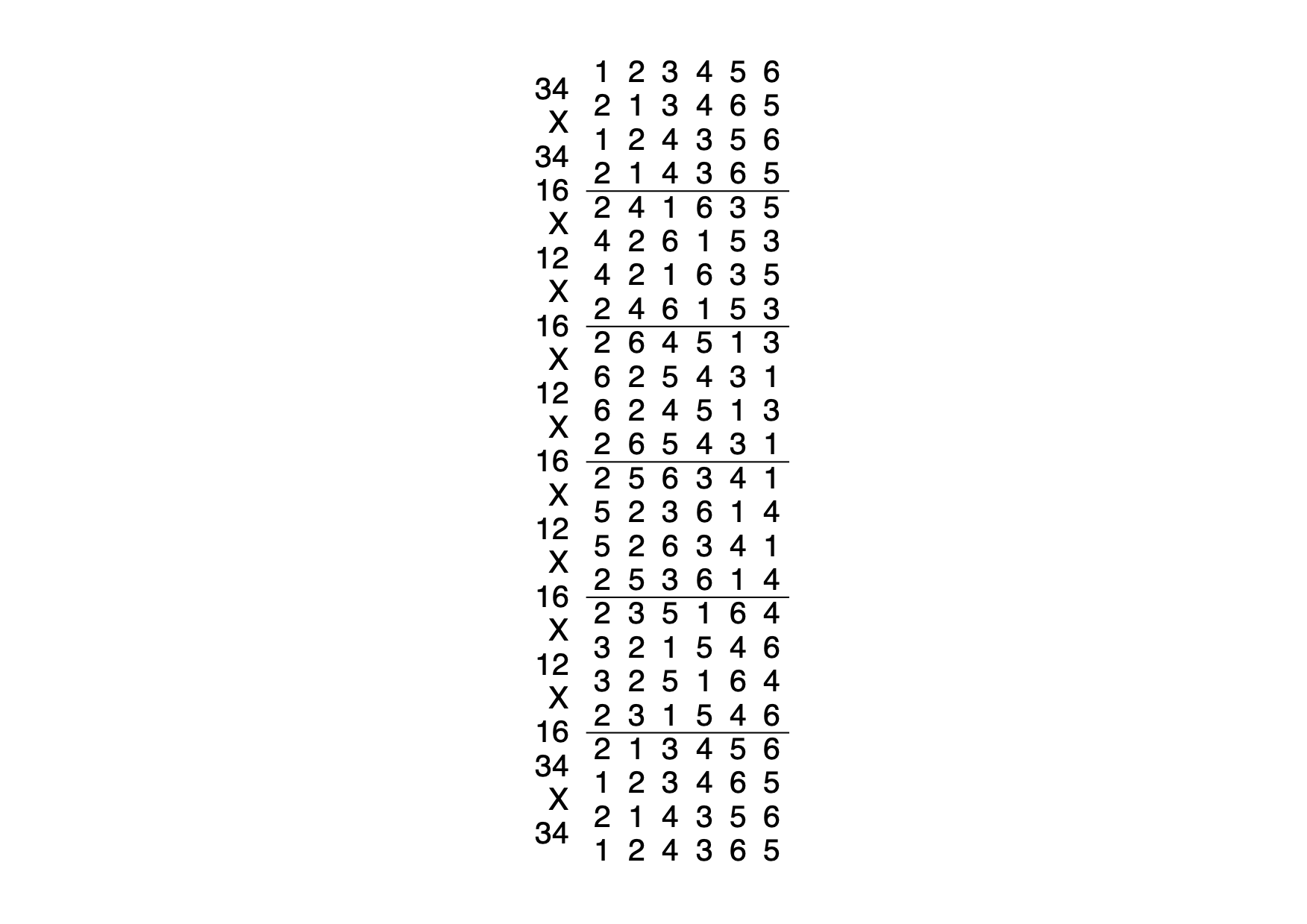30: Kent TB Minor: the first lead
This lesson follows on from Lesson 10 and is currently under construction.
If you managed to write out the first twenty four rows of Kent TB Minor correctly, you will have produced this:

Notice that the last row is just one change away from rounds. If the 2nd makes 2nds and everybody else dodges, the method will come round. That's very useful if you just want to practice the first lead, and it's one of Kent's many selling points: you can practise it in small bits. If you print out the first 24 rows and put lines through each bell, you'll see that different bells do different things:
- The treble treble bob hunts.
- The 2nd dodges with the treble, then does lead, 2nds, lead, 2nds, lead....until the treble returns at which point it must dodge with the treble.
- 5 and 6 both treble bob hunt, but with the exception that they omit the dodges in 1-2 (i.e. plain leading on the front).
- 3 and 4 do the same as 5 and 6, but they start and end with Kent places in 3-4.
The Kent places are the trickiest thing in Kent. When you're first learning Kent, you can make it easier by simply replacing them with dodges. Remember, the Kent places aren't there to annoy you, they're simply there to stop the method being false. If you ring Kent without the places, you'll find that it comes round after only two changes, but for practice purposes, it really doesn't matter. I've christened this false version 'Dodgy Kent' and I commend it to you.
Difficulties with ringing Kent places fall into two categories: a) knowing when to ring them and b) executing them correctly.
Knowing when to ring them:
- Notice that Kent places are made by the bells in 3-4 only when the treble is dodging on the front. If you find yourself in 3-4 and the treble isn't in 1-2, then don't make Kent places; just dodge normally.
- Notice also that the Kent places come as a pair, one at the start of the lead and one at the end. They are made by the same bells (3 and 4 in the first lead) and those bells are moving in the same direction each time. In practical terms, it means that if you ring a set of Kent places, you'll need to ring another set the next time you pass through 3-4 heading in the same direction. Between the two sets of kent places, you will pass through 3-4 but heading in the opposite direction; the treble will be up in 5-6 at that point, so just dodge normally.
Executing Kent places
- Notice that Kent places are wrong places: they are made at backstroke and handstroke.
- Notice that one of the blows in 3rds will be over the treble.
- Notice that both blows in 4ths will be over the same bell (the one making 3rds).
Don't get stresssed about Kent places. You're more likely to go wrong if you over-think them. If you miss them and just dodge instead, you'll still end up in the right place heading in the right direction. Do bear in mind though that the conductor will probably start to snarl at you if you keep messing them up.
If you'd like to get plenty of practice at Kent places, then ring Forward Minor. We've come across it before. It's simply Treble Bob hunting with all the 3-4 dodges replaced by Kent places. There's a diagram in Lesson 9.



